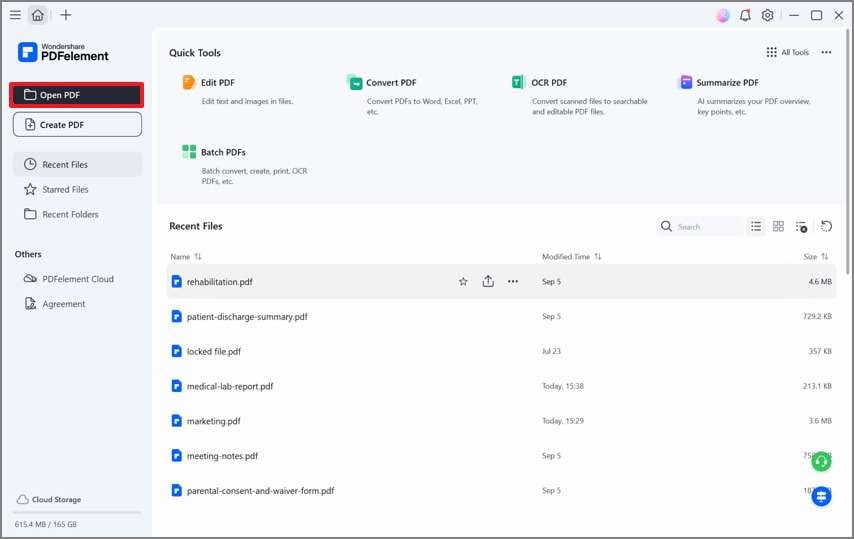An MOU, or Memorandum of Understanding, is like a handshake in document form. It shows that two parties agree on a plan. They are not as formal as a contract but are very useful. People use MOUs in business and legal settings because they help outline what everyone expects from a deal before making it official.
MOUs are great first steps in any serious discussion. They ensure that all parties understand and agree on the main points. This prevents confusion and conflicts later on. So, understanding how to write and interpret an MOU can be very beneficial. This guide will show you how to master these skills.
In this article
Part 1. What is an MOU?

An MOU, or Memorandum of Understanding, is a document that outlines an agreement between two or more parties. It’s a way to write down what everyone agrees to do before making it official with a contract. This helps everyone be clear about the details of their agreement.
Unlike a contract, an MOU is not meant to be legally binding in the same way. It is more about understanding and intent rather than creating enforceable obligations. Think of an MOU as a plan that shows everyone is on the same page but doesn’t force anyone to follow through legally.
MOUs are useful because they are simpler and more flexible than contracts. They can be set up faster and adjusted without much hassle. This makes them perfect for situations where parties are still figuring things out.
However, the legal standing of an MOU can sometimes be confusing. In some cases, courts might see an MOU as binding if it looks too much like a contract. That's why it's important to be clear about the document's purpose. It should state that it is not legally binding unless that is the intention of all parties involved.
When to Use a MOU
An MOU, or Memorandum of Understanding, is perfect for the early stages of a partnership or project. It's good when two businesses want to work together but are not ready for a formal contract. Here are some situations where an MOU is useful:
- Joint Ventures. Before businesses fully commit, they might sign an MOU. This outlines their roles and goals in the venture.
- Collaborations. Universities or research institutions often use MOUs. They agree on how to share knowledge or resources.
- Service Agreements. Companies might agree on the terms of future services. An MOU can outline what they expect from each other.
The benefits of using an MOU are clear. It allows parties to express their intentions without legal pressure. This can lead to open and honest discussions. It’s easier and cheaper to create than a contract. Plus, it can be a big step towards a stronger, official agreement later.
Using an MOU helps everyone understand the plan without making it too formal too soon. This can save time and avoid conflicts as things progress.
Part 2. How to Write a MOU
Writing an MOU, or Memorandum of Understanding, is a straightforward process if you follow these steps:
Step 1 Title and Introduction
Start with a clear title like "Memorandum of Understanding." Then, introduce the parties involved and the purpose of the MOU. Keep it simple and clear.
Step 2 Define the Terms
List the key terms used in the MOU. This helps everyone understand the same meanings of words.
Step 3 Outline the Agreement
Detail what each party agrees to do. Use bullet points for clarity. This part should include:
- Roles and Responsibilities: What each party will do.
- Goals and Objectives: What you all aim to achieve.
- Timeline: When things will happen.
- Contact Information: Who to reach for questions.
- Effective Dates: When the MOU starts and ends.
- Review Clauses: When and how will you review the MOU’s terms?
Step 4 Confidentiality and Dispute Resolution
Add sections on how to handle private information and disagreements. This keeps things smooth if issues arise.
Step 5 Closing
The MOU should end with a place for each party to sign and date. This shows that everyone agrees with its content.
Wondershare PDFelement can make drafting an MOU easier. You can use templates that help you start quickly. The text editing tools let you customize your MOU without hassle. This software helps ensure your document looks professional and clear. It’s a great tool for creating, editing, and saving your MOUs in a format that’s easy to share and review.
Part 3. How Wondershare PDFelement Facilitates the Writing of MOU

Wondershare PDFelement - PDF Editor Wondershare PDFelement Wondershare PDFelement is a powerful tool that simplifies creating a Memorandum of Understanding (MOU). Here’s how its features are specifically useful:
Step 1 Convert to PDF
If your MOU is not a PDF, you can easily convert it. Open PDFelement, click the "+" icon and select "From Files" to transform your document into a PDF.

Step 2 Combine Documents
If your MOU consists of multiple documents, merge them into one. Go to the "Page" tab, choose "Combine PDF," and select the files you must combine.

Step 3 Organize Pages
Arrange the pages of your document for better flow and readability. Click on "Page" and use options like "Insert," "Delete," or "Move" to organize the pages as needed.

Step 4 Use AI Tools
PDFelement’s AI tools enhance your MOU’s clarity and accuracy. Use the AI Sidebar to chat with your document, ask questions, or get summaries. The "Proofread" and "Rewrite" functions help refine the text.

Step 5 Sign with e-Sign
Finalize your MOU by signing it digitally. Navigate to the "Protect" tab, select "Sign Document," and apply your e-signature. This makes the document formal and ready to be shared.

Step 6 Save Your Document
After all edits, save your document by clicking "File" and then "Save." This preserves all changes and signatures.

Using PDFelement’s templates speeds up the MOU creation process. You start with a professional layout that just needs customization, saving time and ensuring consistency in document style. The e-signature capability adds a layer of convenience and security. It allows for quick, verified signings without needing in-person meetings or paper copies, making agreeing on MOUs faster and more efficient.
Part 4. Pros & Cons of MOUs
MOUs, or Memorandums of Understanding, have their upsides and downsides in business dealings:
Tips for Effective MOUs
When drafting an MOU, or Memorandum of Understanding, following best practices can make the process smoother and more effective:
- Define what each party hopes to achieve. Make sure these goals are clearly stated in the MOU.
- Avoid legal jargon. Write in plain language that everyone can understand.
- Clearly outline what is expected from each party. This prevents confusion and disagreements later on.
Clarity ensures that all parties know what they are agreeing to. This mutual understanding is crucial for the success of any agreement. It builds trust and reduces the chances of conflict.
A lawyer can provide valuable advice. They make sure that the MOU reflects the intentions accurately and is prepared in a way that can prevent legal issues. Even if the MOU is not legally binding, having it reviewed by a lawyer can help ensure it does not contain elements that might unintentionally bind the parties.
Conclusion
MOUs play a crucial role in business by setting clear agreements before formal contracts are made. Best practices include using simple language, being clear about roles, and often seeking legal advice. Tools like PDFelement enhance these processes by allowing easy document creation, organization, and signing. These digital tools make managing documents simpler and more efficient, helping businesses save time and avoid misunderstandings.

 G2 Rating: 4.5/5 |
G2 Rating: 4.5/5 |  100% Secure
100% Secure



